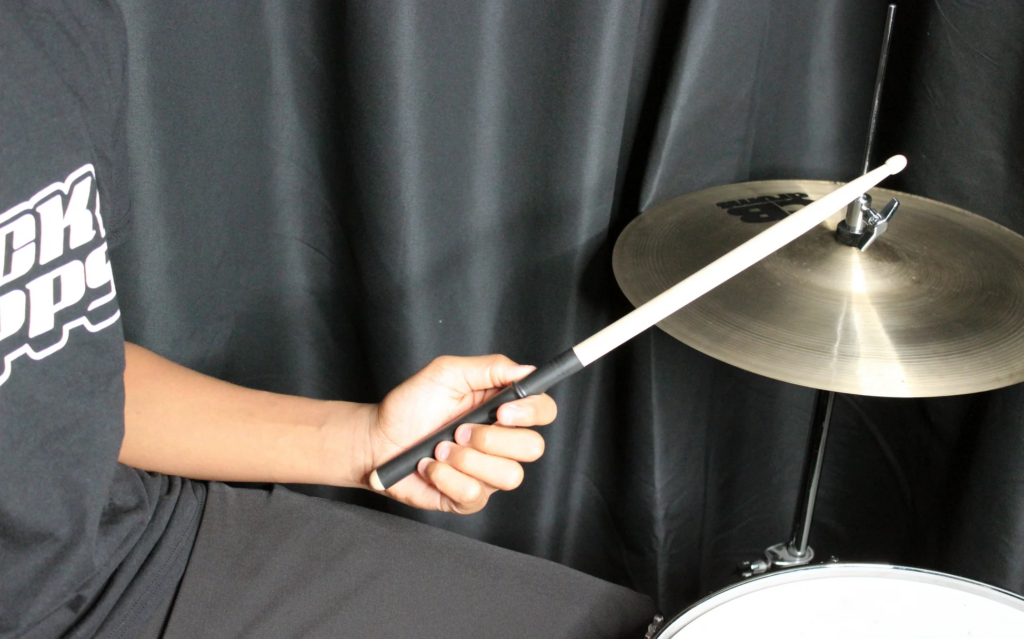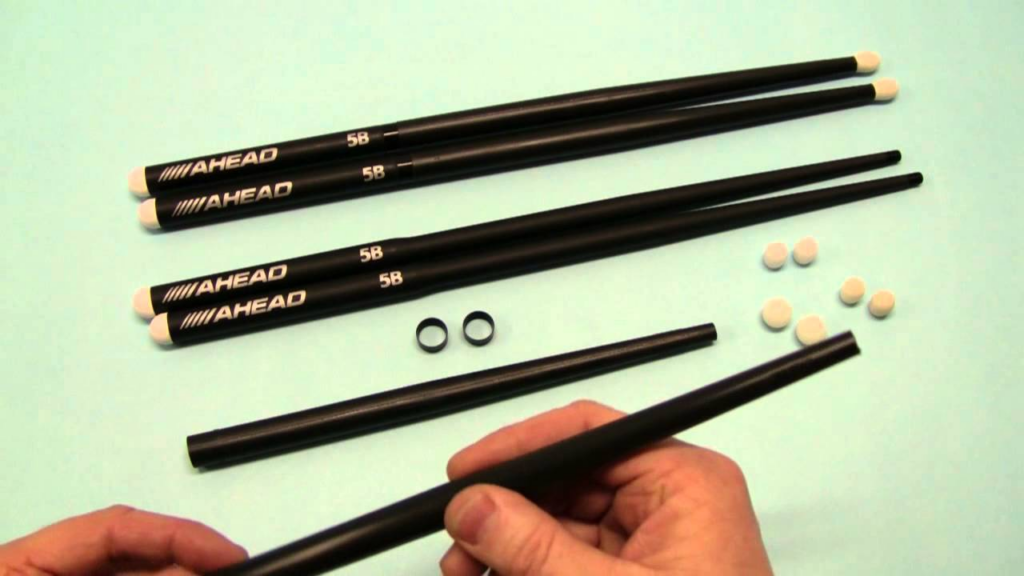Premium drumsticks sound like a luxury until you break three budget pairs in a week.
I used to grab the cheapest sticks I could find. They felt okay, but they chipped fast, warped easily, and left me frustrated during long sessions.
Then I bought a pair of higher-end sticks out of curiosity… and yeah, the difference was noticeable.
In this article, I’ll break down whether expensive drumsticks are actually worth the price – or just clever marketing. If you’re on the fence about investing in premium gear, here’s what you should know before spending the extra cash.
What Makes a Drumstick “Expensive”?

When I first saw a $20 pair of drumsticks sitting next to a $6 pair on the shelf, I laughed. “It’s wood,” I thought. “How different could it really be?”
Turns out, quite a bit.
Premium drumsticks aren’t just a price tag, they’re built differently from the ground up. The materials, the manufacturing process, the quality control… it all adds up.
Once I actually tried a pair, I could feel the difference within a few minutes of playing.
It Starts with the Wood
Most drumsticks are made from hickory, maple, or oak – but premium brands use carefully selected, straight-grain wood that’s kiln-dried, denser, and more durable. That tighter grain means fewer weak points, so they’re less likely to chip or snap.
Cheap sticks often come from leftover cuts or lower-grade wood, which explains why they sometimes break in weird ways or feel off-balance right out of the box.
If you’re curious about how different woods affect performance, this breakdown of drumstick materials covers how maple, oak, and hickory really stack up.
Matched Weight and Pitch
This blew my mind when I first learned about it: premium sticks are matched by weight and pitch to ensure a consistent feel between the left and right hand.
Budget sticks? Not so much. I’ve played with cheaper pairs where one stick clearly felt heavier, and it threw off my flow big time.
When you’re working on speed or trying to clean up your technique, even a small imbalance makes a big difference. If you’ve never considered this before, check out our full guide on how to choose drumsticks like a pro – it breaks down all the factors that impact control and feel.
Finishing Touches Matter

Premium drumsticks also go through more precise shaping and sanding. The tips are better formed, which means more predictable bounce and cymbal response.
They’re usually coated with smoother finishes or grip-enhancing treatments like ActiveGrip or Vic Grip, which helps with comfort during long sessions.
Sometimes, the only difference between a “pro” and “budget” stick is how long it took to make. Premium sticks are just made with more care and you can feel it.
How Premium Drumsticks Feel Compared to Budget Options
The first time I played with a pair of premium sticks, I didn’t even notice it at first.
I was running warmups, messing around on the pad and then I realized: everything just felt smoother. More controlled. I wasn’t gripping as hard, and my strokes felt more consistent.
That’s the biggest difference I’ve felt – the balance and rebound are just better.
Consistency Is Everything
With cheap drumsticks, one stick might be slightly heavier or longer than the other. It doesn’t sound like a big deal until you’re trying to play fast fills or tight accents. Suddenly your left hand lags behind your right.
Premium sticks are matched in weight, length, and pitch, so your hands get used to the feel and motion. It’s subtle, but it seriously tightens up your playing. I noticed it the most when working on rudiments – suddenly everything felt more even.
This is where understanding drumstick weight and rebound comes in handy. Once I figured out how stick weight affects control, I stopped picking sticks just because of price and started choosing them for feel.
Less Hand Fatigue
Another thing I noticed? I wasn’t getting as sore after long sessions. Better wood quality means fewer vibrations traveling up the stick and into your hands. Combine that with a smoother finish or grip coating, and your hands won’t have to work as hard just to hang on.
When I switched to a pair of Vic Firth American Classics with Vic Grip, I could go longer without needing to stop and shake out my wrists.
A Quieter, More Controlled Sound
This one’s more subtle, but especially noticeable on cymbals or electronic drum pads.
Premium sticks tend to have cleaner tip shaping, which means they produce a more defined tone and respond more precisely – something I really started to appreciate during quieter practice sessions.
Want to get the most out of the feel and comfort of your sticks? It all starts with picking the right size, taper, and tip – check out Drumsticks 101 if you haven’t already. It’ll help you understand why feel matters just as much as material.
Durability and Longevity

If you’re going through sticks like gum at a rehearsal, you’re not alone. That was me for years.
I’d stock up on the cheapest bulk pack I could find, thinking I was being smart until I started doing the math on how many I was snapping every month.
That’s when I realized: premium drumsticks might actually be cheaper in the long run.
Stronger Wood = Fewer Breaks
Budget sticks are more likely to be made from wood with irregular grain or small internal cracks. You can’t always see it, but you’ll definitely feel it when the stick snaps mid-fill.
Premium sticks, on the other hand, come from better woodstock – straighter grain, fewer imperfections, and more consistent drying processes.
Once I switched to a pair of FireGrain sticks by Promark, I was shocked at how much longer they lasted. I was playing just as hard, if not harder actually, and they held up twice as long as the discount packs I used to buy.
If you’re curious why certain woods hold up better, this article on drumstick materials gives a good breakdown of how hickory, maple, and oak perform under pressure.
Long-Term Savings
It seems backwards, right? Pay more… save more?
But when I was breaking two pairs of cheap sticks a week, I was easily spending $20-30 a month. One premium pair might cost $14-16, but if it lasts 3-4 weeks, you’re actually coming out ahead.
Plus, there’s less chance of splinters or chipped tips damaging your cymbals or pads – especially with nylon tips or reinforced coatings, which premium lines often include.
Maintenance Still Matters
No matter what you’re using, taking care of your sticks is part of the equation. I wipe mine down after every session (especially if I’m using wax or grip), and I rotate pairs so I’m not always beating on one set.
Are Expensive Drumsticks Worth It for Beginners?
I get this question all the time – usually from someone just starting out or picking up sticks for the first time in years:
“Do I really need to spend more on drumsticks if I’m just learning?”
Short answer? Not always. But let me explain.
When Budget Sticks Make Sense
If you’re brand new to drumming and just figuring out your grip, stroke, and posture, it’s totally fine to start with a basic pair of sticks. You don’t need $20 signature series sticks to learn single strokes.
In fact, it might be better to burn through a couple of budget pairs while you work on your fundamentals.
Just make sure you’re using something balanced and comfortable. Cheap doesn’t have to mean bad – it just means being smart about what you’re buying.
Check out our list of best drumsticks for beginners if you’re not sure where to start. These options are affordable but still reliable enough to build proper technique.
When It’s Time to Upgrade
Here’s the thing though – once you’ve gotten a feel for the basics, you’ll start to notice differences in weight, rebound, and grip. That’s usually when upgrading to premium drumsticks makes sense.
If you’re playing regularly (even just at home), you’ll appreciate:
- A more consistent feel between sticks
- Better rebound for speed and control
- Less fatigue over long sessions
- Coated grips or anti-slip treatments
I remember the first time I tried a premium stick after playing with generic 5Bs. It was like switching from a boxy old sedan to a smooth-handling car – I didn’t know what I was missing until I felt it.
Build Good Habits Early
The longer you play with poorly balanced sticks, the harder it is to undo bad habits.
If you’re starting to take drumming seriously, I’d recommend reading Drumsticks 101 to understand what size, tip, and material are right for your style.
That way, when you do upgrade, you’re not just guessing – you’re investing in what works best for you.
Situations Where Premium Sticks Make the Most Difference

Now look, not every drummer needs premium sticks. But there are certain situations where they genuinely shine and once you’ve played in one of these, it’s hard to go back.
Here’s where I’ve personally felt the biggest difference:
Studio Sessions
When you’re recording, every nuance matters – consistency, tone, and feel are everything. I remember using a cheap pair in a session and noticing how uneven my ghost notes sounded between hands.
Swapped them out for a matched pair of Vic Firth American Classic 5As? Instantly tighter.
Premium sticks are weight and pitch matched, so they give you a more balanced response. That balance translates into more even dynamics and smoother articulation on snare and cymbals.
Touring and Gigging

If you’re playing live regularly, durability becomes a huge deal. The last thing you want is a stick snapping mid-chorus or flying across the stage because your grip gave out.
Premium drumsticks hold up better under pressure. Brands like Promark FireGrain and Vater Player’s Design are designed to survive long sets and heavy hitting.
I’ve toured with FireGrain drumsticks that lasted way longer than I expected, even with daily soundchecks and hard-hitting shows.
Fast or Technical Playing
If you’re playing speed-heavy grooves or intricate fills, the balance and rebound of premium sticks can really improve your control.
I used to fumble fast sticking patterns with budget sticks because they didn’t rebound evenly between hands. Premium sticks, especially those with precise tapering and tip shaping, feel like an extension of your hand.
Sensitive Gear (Electronic Drums, High-End Cymbals)
When you’re playing electronic drum kits or expensive cymbals, the quality of your sticks matters more than you’d expect.
Poorly made sticks can chip, fray, or splinter, which can actually damage pads or cause keyholing on cymbals. Premium sticks tend to have smoother finishes, more refined tips, and better balance – all of which help preserve your gear.
Confidence and Personal Comfort
Let’s be honest – sometimes just knowing your gear is high quality can give you a mental edge. When I step into a session with sticks I trust, I feel better, and that translates into how I play.
Top Premium Drumstick Brands to Know
If you’re ready to level up your sticks, there are a few brands that consistently deliver when it comes to quality, durability, and performance.
I’ve tried a bunch of them over the years – some were awesome, some… not so much. These are the ones that I keep coming back to, and that most pro drummers swear by.
Vic Firth

Vic Firth is basically the gold standard. Their American Classic, Signature Series, and VIC Grip lines are super consistent and feel polished right out of the packaging.
They match sticks by weight and pitch, and you can tell the difference, especially in fast or nuanced playing.
If you’re a beginner moving into intermediate territory, Vic Firth 5A with VIC Grip is a great place to start. You’ll find more detail about it in our best drumsticks for every style roundup.
Promark

Promark makes some killer premium sticks, especially their FireGrain and ActiveGrip models.
FireGrain sticks are flame-tempered for added durability (seriously, they last forever), while ActiveGrip gets tackier the more you sweat. It’s wild how effective that coating is, especially under stage lights.
Promark also has a great Select Balance series that lets you fine-tune between front-heavy or rear-weighted sticks, which can seriously impact your feel.
Vater

Vater has a slightly chunkier feel to their sticks, and some drummers love that. Their Player’s Design and Manhattan Series are built with touring and studio work in mind.
I find their tips are shaped a bit differently, and the taper tends to feel a little beefier, which I find great for power and control.
Zildjian

Yep, Zildjian does sticks too, and their DIP series has a built-in rubber grip coating that’s great for long sessions or sweaty hands.
Their laminated models also hold up longer than standard wood sticks, and I’ve had good luck with their finish quality. They also offer unique taper profiles you won’t find elsewhere.
Meinl Stick & Brush

This one’s newer to the stick game but surprisingly good. Their Hybrid and Standard models are gaining popularity, and the quality feels right up there with the others.
Worth checking out if you want something a little off the beaten path.
Final Thoughts
So, are premium drumsticks worth the extra cost?
If you’re just starting out and still figuring out grip, balance, and basic technique, probably not yet. You can get a lot of mileage out of a well-made budget stick.
But once you start playing more consistently, practicing longer, or gigging regularly? That’s when premium sticks really start to shine. The difference in feel, rebound, durability, and overall control is hard to ignore.
For me, switching to higher-end sticks meant fewer breaks, better dynamics, and a whole lot less frustration.
They won’t turn you into a pro overnight, but they will give you the consistency and comfort to play like one.
Start with one pair. Try a different tip shape, grip texture, or weight. See what fits your style and don’t be surprised if you never go back.
If you’re unsure which size or wood type to start with, I highly recommend checking out our Drumsticks 101 guide for a breakdown of everything from stick balance to materials. It’ll help you make a smarter choice before investing in premium gear.



